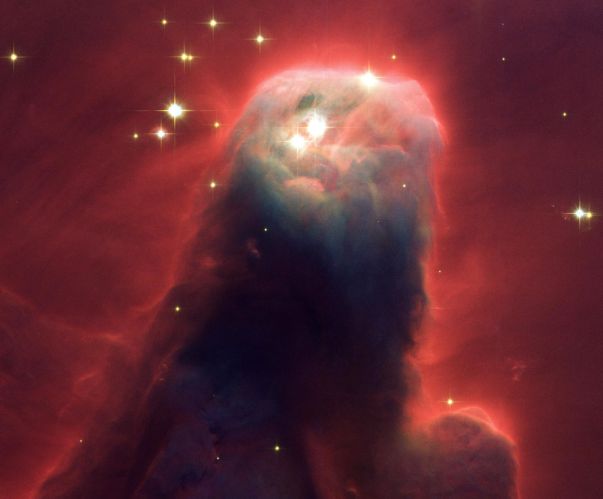 |
Астронет: Астрономическая картинка дня Туманность Конус крупным планом http://variable-stars.ru/db/msg/1176487/eng |
Credit & Copyright: ACS
Science & Engineering Team,
NASA
Explanation:
Cones, pillars, and majestic
flowing shapes abound in
stellar
nurseries where natal clouds of gas and dust are buffeted by
energetic winds from newborn stars.
A well-known example, the
Cone
Nebula within the bright
galactic star-forming region NGC 2264, was captured in
this close-up view
from the Hubble Space Telescope's
newest camera.
While the Cone Nebula,
about 2,500 light-years away
in Monoceros,
is around 7 light-years long,
the region pictured here
surrounding the cone's blunted head is a mere 2.5 light-years across.
In our neck
of the galaxy that distance
is just
over half way
from the Sun to its nearest stellar neighbor,
Alpha Centauri.
The massive star
NGC
2264 IRS, seen by Hubble's infrared camera
in 1997, is the likely source of the wind
sculpting the Cone Nebula and lies off the top of the image.
The Cone Nebula's reddish veil is
produced by glowing hydrogen gas.
Authors & editors:
Robert Nemiroff
(MTU) &
Jerry Bonnell
(USRA)
NASA Web Site Statements, Warnings,
and Disclaimers
NASA Official: Jay Norris.
Specific
rights apply.
A service of:
LHEA at
NASA /
GSFC
& Michigan Tech. U.
